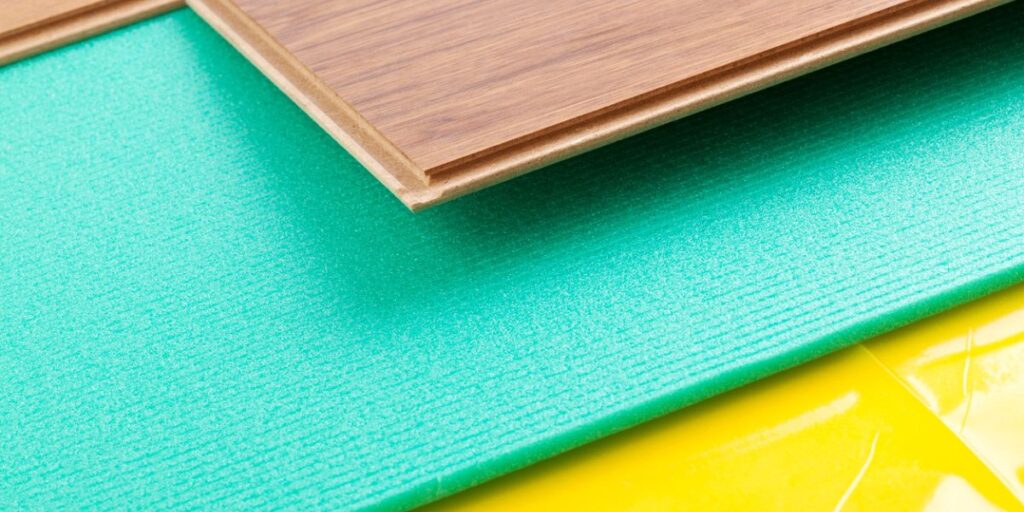Hardwood flooring adds elegance and value to any home, but its successful installation often hinges on a component that lies hidden beneath the surface—wood floor underlayment. This crucial layer can dramatically affect the durability, comfort, and longevity of your hardwood floors. In this blog, we’ll dive into the types of wood floor underlayment available, explore their benefits, and discuss why professional installation is key to maximizing the beauty and functionality of your hardwood floors.
Understanding Wood Floor Underlayment
Wood floor underlayment is a thin layer of material placed between the subfloor and the hardwood flooring. It serves multiple purposes: enhancing comfort underfoot, reducing noise, providing moisture protection, and helping to level minor subfloor imperfections that can affect the finish and feel of the installed flooring.
Types of Wood Floor Underlayment
There are several types of underlayment used in hardwood floor installations, each suited to different needs and types of hardwood:
Foam:
Foam underlayment is a preferred choice for many due to its lightweight nature and ease of installation. This type of underlayment provides exceptional sound dampening and thermal insulation, which enhances the comfort and quietness of a room. Available in various thicknesses from 1/8 inch to 1/2 inch, the thicker variants offer improved insulation, making them suitable for colder climates or areas where noise reduction is particularly important. Additionally, foam underlayment often includes a moisture barrier, which is crucial in preventing water vapor from damaging the floor over time.
Felt:
Felt underlayment is crafted from recycled fibers, which contributes to its environmental sustainability. It has been a traditional choice in flooring for its robustness and ability to provide a solid, cushioned base for hardwood floors. Felt is particularly valued for its moisture-resistant properties. It helps to protect the floor from water damage and the potential growth of mold and mildew, which is essential in humid or damp environments. Additionally, felt underlayment contributes to better sound isolation, adding to the overall acoustic management of a space.
Cork:
Cork underlayment is made from the bark of cork oak trees, which is harvested without harming the tree, thereby making it an environmentally friendly option. Its natural resilience allows it to absorb vibrations and sound, significantly reducing the transmission of noise between floors in a building. Besides its acoustic benefits, cork also acts as a thermal insulator, maintaining a consistent temperature throughout the space. Its ability to compress and rebound makes it effective at smoothing out small imperfections in the subfloor, providing a stable foundation for the wood flooring.
Rubber:
Rubber underlayment stands out for its durability and performance in areas with high foot traffic, such as commercial buildings or busy households. It is composed of either natural or synthetic rubber, offering exceptional resistance to footfalls and noise, thus ensuring a quieter environment. Rubber’s dense material not only provides superior sound insulation but also has the ability to even out slight subfloor irregularities, ensuring a level surface for flooring installation. Furthermore, rubber is inherently resistant to moisture, mold, and mildew, adding an extra layer of protection for the flooring.
Benefits of Choosing the Right Wood Floor Underlayment
Selecting the right underlayment is essential for ensuring the optimal performance of your hardwood flooring. Here are some key benefits:
- Comfort: Underlayment can make walking on hardwood floors more comfortable by providing a slight cushioning effect.
- Moisture Protection: Some types of underlayment, such as cork and rubber, offer barriers against moisture that can damage hardwood over time, preventing warping and buckling.
- Noise Reduction: A good underlayment will absorb sound, reducing the noise of footsteps and other impacts. This is particularly important in multi-level homes or apartments.
- Longevity: By smoothing out imperfections in the subfloor, underlayment can prevent the wood from moving and rubbing, which reduces wear and tear.
Why Proper Underlayment is Important in Hardwood Floor Installations
Proper underlayment installation is key to avoiding future problems such as uneven flooring surfaces, excessive floor noise, and potential moisture damage. It ensures that the hardwood floor lays flat and stays secure, reducing movement and the potential for squeaks or creaks. Additionally, underlayment can help to meet the warranty requirements set by many hardwood flooring manufacturers.
Professional Services for Hardwood Floor Installation
For homeowners looking to ensure their hardwood floors are installed with precision and care, professional installation services like those offered by East Coast Flooring are invaluable. Our experienced professionals understand the intricacies of choosing the right underlayment and meticulously prepare the subfloor to ensure a flawless finish. With East Coast Flooring, you can rest assured that your hardwood floor installation will not only look great but will also last for many years to come.
Tips and Considerations for Hardwood Floor Installation
When planning your hardwood floor installation, consider these tips:
- Choose the right type of underlayment for your specific flooring and environmental conditions.
- Ensure the subfloor is clean, dry, and level before installation begins.
- Discuss your lifestyle needs with your installer to select an underlayment that best suits your home’s acoustic and moisture conditions.
Get Hardwood Floor Installations from East Cost Flooring & Interiors
Investing in the right wood floor underlayment is just as important as selecting the hardwood itself. Not only does it ensure your floor functions beautifully, but it also preserves the life of your investment. For expert guidance and professional installation, reach out to East Coast Flooring and Interiors. Let us help you achieve the perfect foundation for your beautiful new hardwood floors.
Don’t leave the success of your hardwood floor installation to chance. At East Coast Flooring and Interiors, we specialize in providing top-tier flooring solutions that include expert advice on the best materials and precise installation techniques. Whether you’re updating a residential space or outfitting a commercial property, trust our experienced team to deliver unmatched quality and service. Contact us today to discuss your flooring project and see how we can help you lay the groundwork for a spectacular new floor with professionalism, care, and precision.
